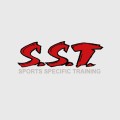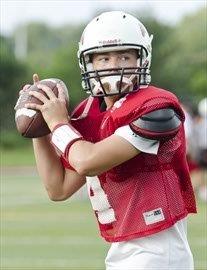S&C Chose Me
Growing up in the country and being part of an active family, health and fitness has always been a significant part of my life. Whether I liked it or not, screen time was always limited, but we could never be outside for too long. I tried as hard as I could to be a lazy couch potato, eating ice cream and twinkies until there was nothing but wrappers left. As awesome as that sounds for some reason, I always found my way back to the diamond, rink or field competing for bragging rights and self made highlights. As I have grown up and watched my body change from an awkward unathletic tween, to a decently strong, somewhat coordinated, “elite” recreational athlete. This is all thanks to the wonderful journey that is strength training.
As a young boy I loved playing all kinds of sports, running around town with my buddies, making up games and being active was my thing. School and class on the other hand was a constant challenge. Not to say I was a bad student, but applying my knowledge was certainly not something I did well. My low attention span and never ending desire to go outside, usually prevented me from getting my homework done and excelling on the academic side of things. Once I hit high school, homework went from half-assed to non existent; I was mostly concerned about what my buddies were doing and where we were eating lunch. Somehow I battled through high school maintain an average in the mid 70’s. My lack of focus, had me concerned about my future, I was unsure of my interests and what I wanted to do with my life. After discussing my options with the guidance counselor, we decided I should apply to Fitness and Health Promotion.
This college course looked perfect for me. I didn’t want to do University because it was more academic and I know I don’t learn well in that environment, on the other hand, this College course sounded right up my alley. Of course there were lectures, but the information was presented in a way that I could relate to and it was a topic I was interested in researching so the homework and assignments did not feel so daunting. The other nice thing for me was that there were a lot of practical portions and placements where we got to apply our knowledge in real situations. This gave me great real life experience and confidence that this was what I wanted to do prior to getting into the field.
I did my college field placement at SST Burlington and have now been working in the Strength and Conditioning field for 5 years, where I have had the chance to work with ALL types of people from Elite Athlete’s, to the Elite Athlete’s Mom, Dad and younger sister. I enjoy working with a diverse client base, because it forces you to think about ALL aspects of fitness in different situations and what strategies/exercises would be most effective in each case. My approach is to make the most realistic and effective plan for each client based off their personality, skill level and limitations. I find this field to be extremely rewarding because no matter whom you work with and what they do, you can ALWAYS help someone improve in the gym, with their nutrition as well as their overall quality of life.
I cannot see myself doing any other job, it fits my personality, it is my hobby, it keeps me healthy, I have become more confident in myself and love watching other people succeed. Train smart (and hard occasionally), eat right, be consistent……You will not regret it!
John Blair



